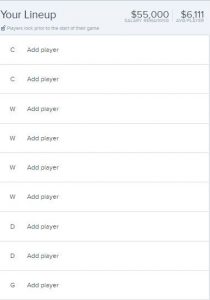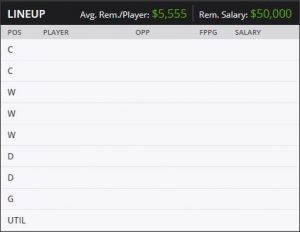”I’m ready to get serious. Now what?”
WELCOME TO THE PROFITCAST EPISODE 2!
I have something really special for everyone here that Ive been working on for a long time. This series of short tutorials tackles specific questions I get from beginners or anyone looking to enter sport/stock markets professionally. I really want these podcasts to be direct, concise & informative They will provide you the ability to get an easily located answer to your questions. These lessons begin at the most basic entry level. However, I also invite any readers to submit your questions to me on the slack channel or on Twitter @MLBMovingAvg (I’ll shout you out).
Thanks for Listening to the Profitcast Episode 2
General Risk Strategy
I often get questions about betting strategy. It all starts with proactively determining how much I’m going to bet and then working backwards when applying that to my plays on a percent basis.
My daily allotted risk (R) shifts with performance. I have found that reducing bets during down times helps greatly in protecting capital. To be more specific, my standard is a risk of R=1% total stack. After a winning day it goes to 1.5%, and caps at a max 2% after two wins in a row. I do the opposite as well. I remain at 1% if there are two losing days, and reduce to a capped minimum of 0.5% for the third.
Daily Betting Strategies
I’d like to share a few of my fallback plans on playing strategy in case I don’t get to a specific plan on a given night. If a bet is at or close to even, bet it straight. We want to avoid pairing action as much as possible. Sometimes the odds make this unavoidable. Whenever I have two heavy favorite picks, I will pair them. If I have three favorites, I play a small ABC F5ML parlay, and then play all three F5RLs straight, but of course it always depends on the specific odds that day. I do not like to pay any juice beyond -200. I would never play those straight. We must pair, or fade. Any team can win on any day.
Whenever I have four picks that come with juice, I’m usually going to play a Round Robin where 3 of 4 hits will guarantee a nice percentage profit, and all 4 is huge night on a relatively small risk. I also always take a small percentage of daily risk on a four game parlay.
If there are ever more than four plays, I try to compartmentalize the picks, and then follow one of the plans above. A good place to start is to play any underdogs straight and then either pair by length, or by time of day. It’s always a good idea to separate the later games on tickets to allow for chances to hedge and guarantee profit.

Management
Tailor your game to your own account and expectations. I bet small relative to stack, and bet smart. If you can’t make money with $100, what makes you think you’ll make money with $10,000?
I never risk more than 1% on any outcome, and never bet more than 2% on any given night. I scale those numbers down into losing streaks, and increase them again as the wins roll in.
Profitcast Episode 2
John L. prepares this article in his personal capacity. The opinions expressed in this article are the author’s own and do not reflect the views or opinions of Win Daily or any of the employees and/or executives of Win Daily. All data and information provided on this site is for informational purposes only. Win Daily makes no representations as to accuracy, completeness, currentness, suitability, or validity of any information on this site and will not be liable for any errors, omissions, or delays in this information or any losses, injuries, or damages arising from its display or use. All information provided as-is.
As always, special thanks to https://fangraphs.com & https://pff.com for all the great statistical work that they do.






